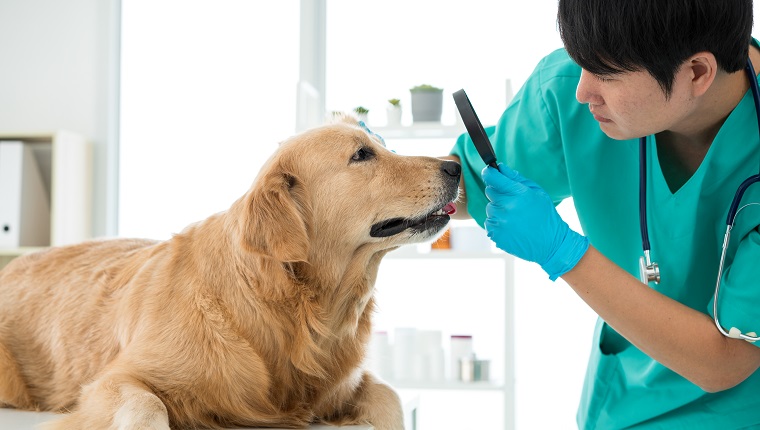Diseases of the orbit of the eye in dogs is a medical term that’s used to refer to a collection of diseases that relate to the position of a dog’s eyeball.
Three of the most common specific conditions are called enophthalmos, exophthalmos, and strabismus, and they can cause the eyeball to sink towards the skull, bulge out, or appear cross-eyed respectively.
If you see signs that your dog might be suffering from eye issues, then you must consult your veterinarian for a proper diagnosis and advice. Here’s what you should know about the symptoms, causes, and treatments of diseases of the orbit of the eye in dogs.
Symptoms Of Diseases Of The Orbit Of The Eye In Dogs
Diseases of the orbit of the eye in dogs can cause a wide range of symptoms. Some of the most commonly seen symptoms include:
- Vision loss
- Fever
- Watery discharge or pus
- Swollen eyelids
- Entropion
- Not being able to fully close the eyelids
- Formation of a third eyelid (called cherry eye)
Causes Of Diseases Of The Orbit Of The Eye In Dogs

The cause of diseases of the orbit of the eye in dogs depends on which specific condition is affecting a dog.
In cases of exophthalmos, some of the most common causes include:
- Inflammation issues
- Presence of blood or pus within the eye
In cases of enophthalmos, some of the most common causes include:
- Dehydration
- Shrunken eyeball
- Cancer
- Nerve issues in the eye
Finally, in cases of strabismus, some of the most common causes include:
- Genetic factors
- Central nervous system issues
- Scar tissue caused by a trauma
Veterinary Treatments
If you suspect that your dog is suffering from diseases of the orbit of the eye, your veterinarian will want to conduct a full physical examination and pay special attention to the face and eye areas.
Blood and urine tests will be carried out. Additionally, an X-ray of the skull can help to highlight any abnormal issues.
When it comes to treatment, there are a number of different options available depending on the precise cause of the condition. Some of the most common treatments for diseases of the orbit of the eye include surgery, draining any abscesses, and antibiotics.
As always, if your vet prescribes any antibiotics for your dog, it is vital that you stick to the precise dosage and frequency instructions and complete the full course of medication.
Has your dog ever had a disease of the orbit of the eye? What did your vet do to help? Tell us all about it in the comments below.









